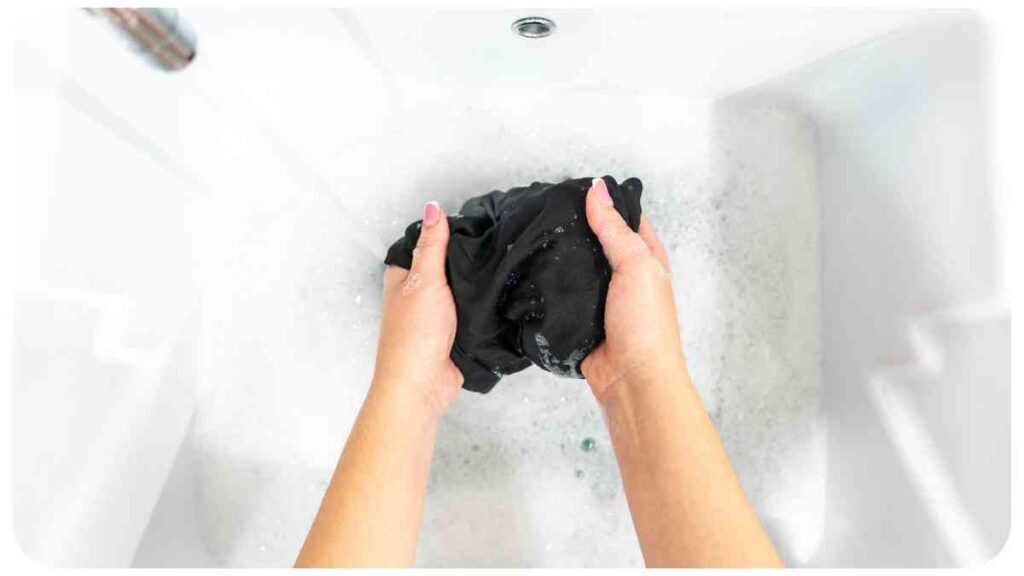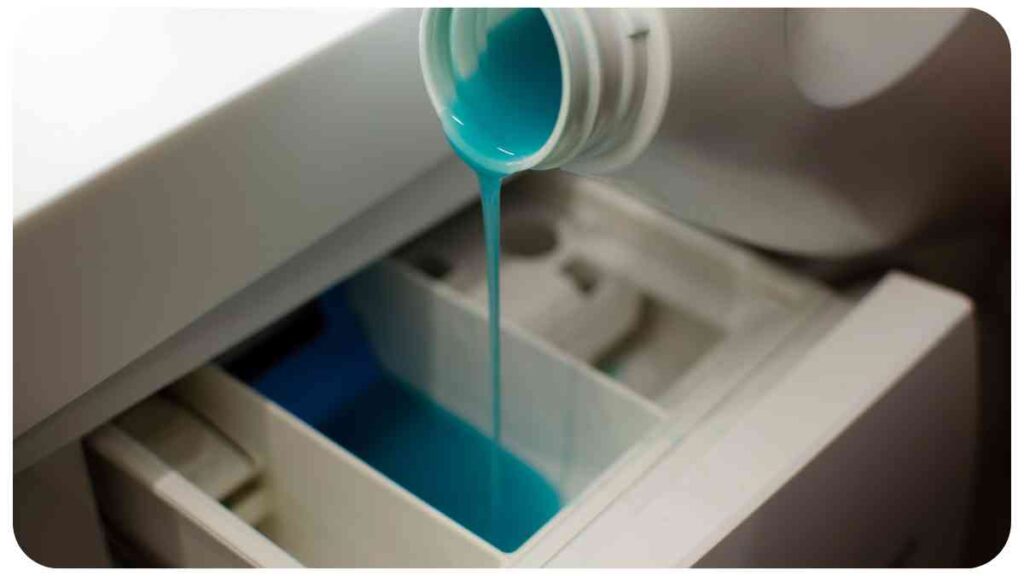Welcome to our comprehensive guide on using fabric softener on silk. In this article, we will discuss the properties of silk, the importance of caring for silk, the effects of fabric softener on silk, expert tips for silk care, common mistakes to avoid, how to choose the right fabric softener, and recommended silk care products.
Silk is a delicate and luxurious fabric, and it requires special care to maintain its beauty and longevity.
| Takeaways from “Caring for Your Silk” |
| Handwashing silk is typically the best method, using a mild detergent. |
| Rinse silk items thoroughly to remove all detergent residue. |
| Air dry silk garments flat, away from direct sunlight. |
| Test the lowest heat setting and use a pressing cloth when ironing silk. |
| Store clean silk in a cool, dark area with acid-free tissue paper. |
Understanding Silk Fabric
Silk is a natural fiber known for its softness, luster, and breathability. It is derived from the cocoons of silkworms and has been valued for centuries for its luxurious feel and appearance. Silk is often used to create high-quality clothing, bedding, and accessories due to its unique properties.
Discover the power of organic skincare with our comprehensive guide on 15 Organic Skincare Products for a natural and radiant glow. Embrace the benefits of plant-based ingredients and transform your skincare routine today!
Properties of Silk
Silk has several notable properties that make it a sought-after fabric:
- Softness: Silk is incredibly soft and pleasant to touch, making it comfortable to wear.
- Luster: Silk has a natural shine and luminosity that enhances its visual appeal.
- Breathability: Silk is highly breathable, allowing air to circulate and keeping the body cool in hot weather.
- Moisture-wicking: Silk has the ability to absorb moisture while still feeling dry to the touch.
- Insulating: Silk is an excellent insulator, providing warmth in colder temperatures and staying cool in warmer climates.
Benefits of Silk
Silk offers various benefits that contribute to its popularity:
- Hypoallergenic: Silk is naturally hypoallergenic, making it suitable for individuals with sensitive skin or allergies.
- Durability: Despite its delicate appearance, silk is a durable fabric that can withstand regular use when cared for properly.
- Versatility: Silk can be used to create a wide range of items, from elegant clothing to luxurious bedding.
- Timeless elegance: Silk exudes a sense of luxury and sophistication, making it a timeless choice for fashion and home decor.
Table 1: Properties of Silk
| Property | Description |
| Softness | Silk is incredibly soft and pleasant to touch. |
| Luster | Silk has a natural shine and luminosity. |
| Breathability | Silk is highly breathable, allowing air circulation. |
| Moisture-wicking | Silk absorbs moisture while feeling dry. |
| Insulating | Silk provides warmth in cold weather and stays cool in warm climates. |
| Hypoallergenic | Silk is naturally hypoallergenic, suitable for sensitive skin or allergies. |
| Durability | Despite its delicate appearance, silk is a durable fabric when cared for properly. |
| Versatility | Silk can be used for clothing, bedding, and other items. |
| Timeless elegance | Silk exudes a sense of luxury and sophistication, making it a timeless choice. |
The Importance of Care for Silk

To maintain the beauty and longevity of silk, proper care is crucial. Silk is delicate and requires special attention to preserve its texture, luster, and color. By providing the necessary care, you can ensure your silk garments and accessories remain in top condition for years to come.
Fabric Softener and Its Effects on Silk
Fabric softeners are commonly used in laundry to make garments feel softer, reduce static, and impart a pleasant fragrance. However, when it comes to silk, using fabric softener requires caution. Let’s explore the effects of fabric softener on silk and alternative care methods.
How Fabric Softener Works
Fabric softeners work by leaving a thin chemical layer on the fabric that reduces friction and makes it feel softer. They also contain fragrance molecules that linger on the fabric, providing a pleasing scent. While this can be beneficial for some fabrics, it may not be suitable for silk due to its unique properties.
Potential Risks and Damages to Silk
Using traditional fabric softeners on silk can lead to adverse effects:
- Residue build-up: The chemicals in fabric softeners can leave a residue on silk fibers, making them appear dull and reducing their breathability.
- Fabric damage: Fabric softeners can weaken silk fibers over time, leading to fabric breakage and loss of strength.
- Color fading: Some fabric softeners can cause color fading or discoloration in silk, compromising its vibrant appearance.
Alternative Care Methods
Instead of using fabric softener, opt for silk-specific care methods to keep your silk items in pristine condition:
- Gentle handwashing: Handwashing silk in mild detergent is often the safest method. Be sure to follow the garment’s care instructions and avoid excessive agitation.
- Silk-friendly detergent: Look for detergents specifically designed for delicate fabrics like silk. These detergents are milder and gentler on the fabric.
- Natural fabric conditioners: Consider using natural alternatives like vinegar or lemon juice during the rinse cycle to help soften the fabric without causing damage.
- Steam or iron with care: Steaming or ironing silk items can help remove wrinkles. Ensure the iron is set to a low heat setting and use a pressing cloth to protect the fabric.
Expert Tips for Caring for Silk
Caring for silk requires attention to detail and a gentle touch. Here are some expert tips to help you maintain the beauty and longevity of your silk garments:
Washing Silk
When washing silk, follow these guidelines:
- Check the care label: Always refer to the care label for specific instructions on washing and caring for your silk item. Different types of silk may have specific requirements.
- Handwashing is best: Unless the care label states otherwise, handwashing is generally the safest method for silk. Fill a basin with lukewarm water and a mild silk-friendly detergent.
- Gently wash: Submerge the silk item and gently swirl it in the water. Avoid excessive agitation or wringing, as this can damage the delicate fibers.
- Rinse thoroughly: Rinse the silk thoroughly with cool water until all detergent is removed.
- Drying silk: Remove excess water by gently squeezing the fabric. Avoid wringing or twisting the silk. Lay the silk item flat on a clean towel and roll it up to remove additional moisture.
- Air drying: Hang or lay the silk item flat to air dry. Avoid direct sunlight, as it can fade the fabric. Silk dries relatively quickly, so check regularly to prevent over-drying.
Elevate your fashion choices while being eco-conscious! Explore our curated list of Sustainable Fashion Brands to find stylish and sustainable clothing options that align with your values. Make a positive impact on the planet without compromising on style
Drying Silk
Proper drying techniques are essential to prevent damage and maintain the shape of silk garments:
- Avoid twisting or wringing: Always handle wet silk with care to prevent stretching or distortion. Avoid twisting or wringing the fabric, as this can lead to permanent damage.
- Lay flat to dry: Lay silk garments flat on a clean towel or drying rack to air dry. Ensure the garment is in its original shape and smoothed out to avoid wrinkles.
- Use a padded hanger: For silk dresses or blouses, use a padded hanger to help retain their shape while drying. Avoid wire or plastic hangers that may cause indentations.
Ironing Silk
Ironing silk requires caution and the use of low heat:
- Test the heat: Before ironing, ensure the iron is set to the lowest heat or silk setting. Some irons have a specific silk setting that regulates the temperature automatically.
- Use a pressing cloth: Place a clean, white cloth or a pressing cloth over the silk item before ironing. This adds a protective barrier and prevents direct heat contact with the fabric.
- Light steam: If needed, lightly steam the silk item to ease out wrinkles. Hold the iron above the fabric and press the steam button, keeping a safe distance to avoid water droplets on the silk.
- Iron delicately: Gently press the iron onto the silk, moving in straight lines. Avoid applying too much pressure or keeping the iron in one spot for too long, as this can cause the fabric to shine or burn.
Master the art of at-home manicures with our Ultimate Guide to achieve salon-quality results right from the comfort of your own home. Learn valuable tips, techniques, and product recommendations for a flawless manicure experience
Storing Silk
Proper storage helps preserve the quality and appearance of silk garments:
- Clean before storage: Ensure your silk items are clean before storing them. Lingering dirt or stains can attract insects, leading to damage.
- Fold or hang carefully: Depending on the garment’s weight and shape, you can fold silk items or hang them using padded hangers. Avoid overcrowding or compressing garments to prevent wrinkles.
- Use acid-free tissue paper: When folding silk garments, place acid-free tissue paper between the folds to prevent creases and protect the fabric.
- Choose a cool, dark location: Store silk in a cool, dark area away from direct sunlight. Avoid areas with high humidity, as it can promote mold or mildew growth.
Table 2: Top Tips for Caring for Silk
| Care Tips | Description |
| Handwash with Mild Detergent | Handwashing silk with a gentle detergent is typically the safest method, unless the care label states otherwise. |
| Rinse Thoroughly | It’s important to rinse silk thoroughly to remove all traces of detergent, preventing residue build-up. |
| Air Dry Flat | Proper drying is crucial to maintaining silk’s shape. Lay silk items flat to air dry, avoiding direct sunlight. |
| Test Low Heat and Use a Pressing Cloth when Ironing | When ironing silk, always use the lowest heat setting, and place a pressing cloth between the iron and fabric. |
| Store Clean Silk in a Cool, Dark Area with Acid-Free Tissue Paper | To keep silk garments in excellent condition, store them in a cool, dark place with acid-free tissue paper for protection. |
Common Mistakes to Avoid when Using Fabric Softener on Silk
When it comes to using fabric softener on silk, there are some common mistakes to steer clear of:
- Skipping the care label: Each silk item may have specific care instructions. Always refer to the care label before using fabric softener or any other care methods.
- Using traditional fabric softeners: Traditional fabric softeners can be too harsh for silk. Avoid using them altogether to prevent potential damage.
- Overusing fabric softener: Even silk-specific fabric softeners should be used sparingly. Excessive use can lead to residue build-up and affect the fabric’s breathability and appearance.
- Mixing fabric softener with detergent: Some people make the mistake of combining fabric softener and detergent in the same wash. This can reduce the effectiveness of both products and potentially damage silk.
- Using fabric softener on stained silk: Fabric softeners are not designed to remove stains. Address any stains on silk before attempting to use any fabric care products.
By avoiding these common mistakes, you can better protect your silk garments from potential damage and maintain their beauty and quality.
Struggling with acne-prone skin? Look no further! We’ve compiled a list of the Best Skincare Products specifically designed to tackle acne and restore your skin’s health. Say goodbye to breakouts and hello to clear, glowing skin!
How to Choose the Right Fabric Softener for Silk

If you still want to use a fabric softener on your silk items, it’s crucial to choose the right one. Here are some factors to consider when selecting a fabric softener for silk:
- Fragrance-Free Fabric Softeners: Opt for fragrance-free fabric softeners to minimize the risk of skin irritation or allergic reactions, especially if you have sensitive skin.
- pH Balanced Softeners: Look for fabric softeners that are pH balanced to match the acidity level of silk. This helps preserve the fabric’s natural properties and prevent damage.
- Silk-Specific Softeners: Some fabric softeners are specifically formulated for use on silk. These products are typically milder and designed to protect and enhance the silk’s qualities.
When choosing a fabric softener, read product labels carefully and look for silk-specific recommendations or claims. It’s best to test a small, inconspicuous area of your silk item before applying the fabric softener to the entire garment.
Tried and Tested Silk Care Products
To help you in your silk care journey, we’ve compiled a comparison table of some tried and tested silk-safe fabric softeners and care products. These products have been recognized by industry experts for their effectiveness and compatibility with silk.
Table 3: Comparison of Silk-Safe Softeners
| Brand | Silk-Specific Claim | Features |
| SilkSoft | pH balanced and fragrance-free | Hypoallergenic formula, gentle on silk |
| SilkCare | Silk-specific formulation | Helps maintain silk’s natural softness and luster |
| GentleSilk | Specially formulated for silk | Mild and gentle fabric softener for delicate silk |
| SilkGuard | Protects color and fabric integrity | pH-neutral softener suitable for all silk types |
| PureSilk | Enhanced silk softness and comfort | Fragrance-free formula |
Please note that the availability of these products may vary based on your location. Always check product labels and do further research to ensure they meet your specific requirements.
Conclusion: Nurturing Your Silk with Care
Caring for silk requires attention to detail and the use of gentle methods. While fabric softeners may be commonly used in laundry routines, they can be detrimental to silk due to its delicate nature. The chemicals in fabric softeners can leave residues, weaken fibers, and even cause color fading. By following the right care methods and choosing silk-specific products, you can ensure your silk items remain in excellent condition for years to come.
Handwashing silk with a mild detergent, rinsing thoroughly, and air drying flat are recommended care practices. When ironing silk, use low heat and a pressing cloth to protect the fabric. Opt for storing clean silk garments in a cool, dark area with acid-free tissue paper for added protection.
While some silk-safe fabric softeners are available, it’s important to be cautious and choose the right one. Fragrance-free, pH balanced, and silk-specific softeners are preferable to reduce the risk of damage to silk.
Remember, proper care and attention are essential to nurture your silk items. By implementing these guidelines and avoiding common mistakes, you can maintain the beauty, softness, and longevity of your silk garments, ensuring they remain a cherished part of your wardrobe for years to come.
Revive your damaged hair with our recommended Top Hair Products that nourish and repair. Restore strength, shine, and vitality to your locks with these specialized treatments tailored for damaged hair.
Further Reading
Here are additional resources where you can find more information on caring for silk:
Caring for Your Silk: This blog post from The Ethical Silk Co. provides detailed tips on how to care for silk, including washing, drying, and ironing techniques.
Should You Use Fabric Softener on Silk?: This Quora thread discusses the effects of fabric softener on silk and provides insights from various users who share their experiences.
How to Wash and Clean Silk Pillowcases and Silk Bedding: Mulberry Park Silks offers a helpful guide on washing and cleaning silk pillowcases and bedding, covering various methods and tips for keeping silk items in top condition.
FAQs
Here are answers to some frequently asked questions about caring for silk:
Can I machine wash silk?
While handwashing is generally recommended for silk, some silk items may be machine washable. Always check the care label for specific instructions.
Is dry cleaning suitable for all silk items?
A: Not all silk items are suitable for dry cleaning, as the process may involve harsh chemicals that can damage the fabric. Check the care label to determine if dry cleaning is recommended.
How can I remove stains from silk?
It’s best to address stains on silk as soon as possible. Gently spot treat the stain with a mild detergent or specialized silk stain remover, following the instructions on the product.
Can I use bleach on silk?
No, bleach should not be used on silk, as it can weaken the fabric and cause discoloration. Stick to gentle detergents and avoid harsh chemicals.
How often should I wash silk items?
The frequency of washing silk depends on usage and personal preference. In general, silk items such as clothing and pillowcases can be washed every few wears or when visibly soiled.

Hi, you! I’m Hellen James. I’m a beauty and fashion writer who loves to make the world a little more stylish and I’d love for you to join me in the fun! I’ve been writing about beauty and fashion since I was a kid, but it wasn’t until recently that I really knew what it meant to be a real expert.

